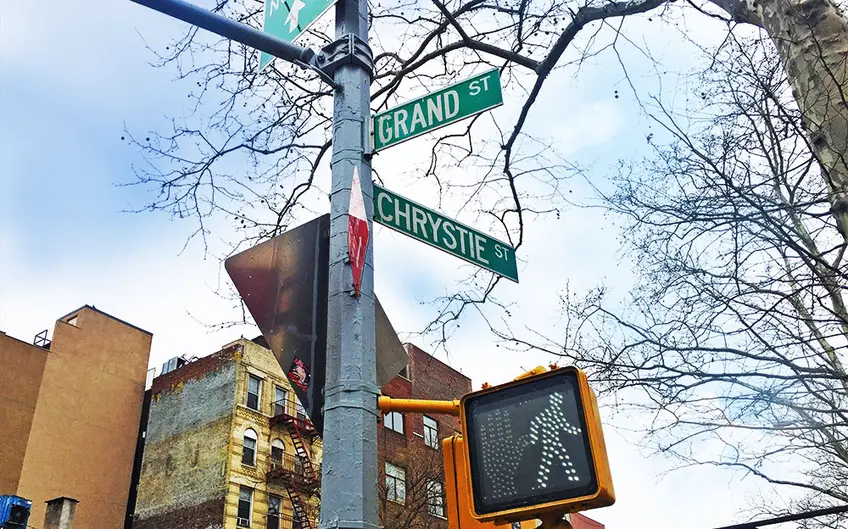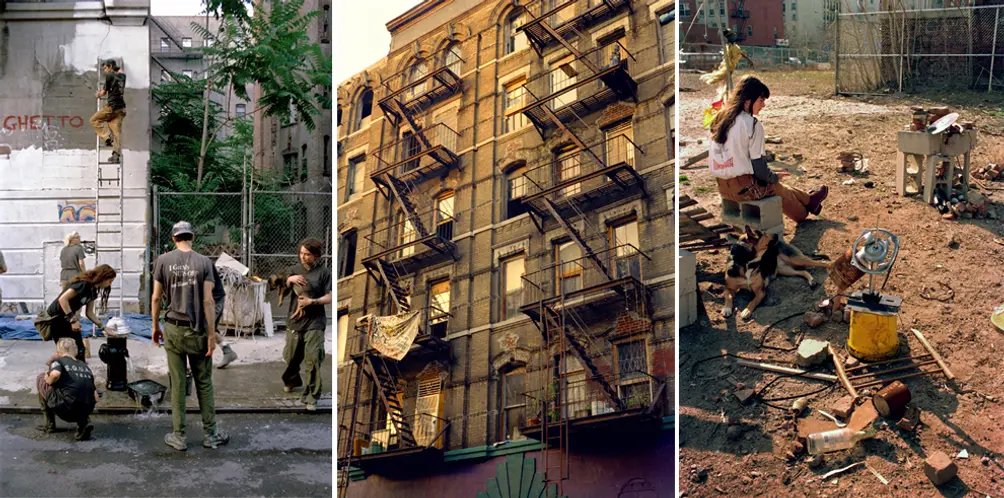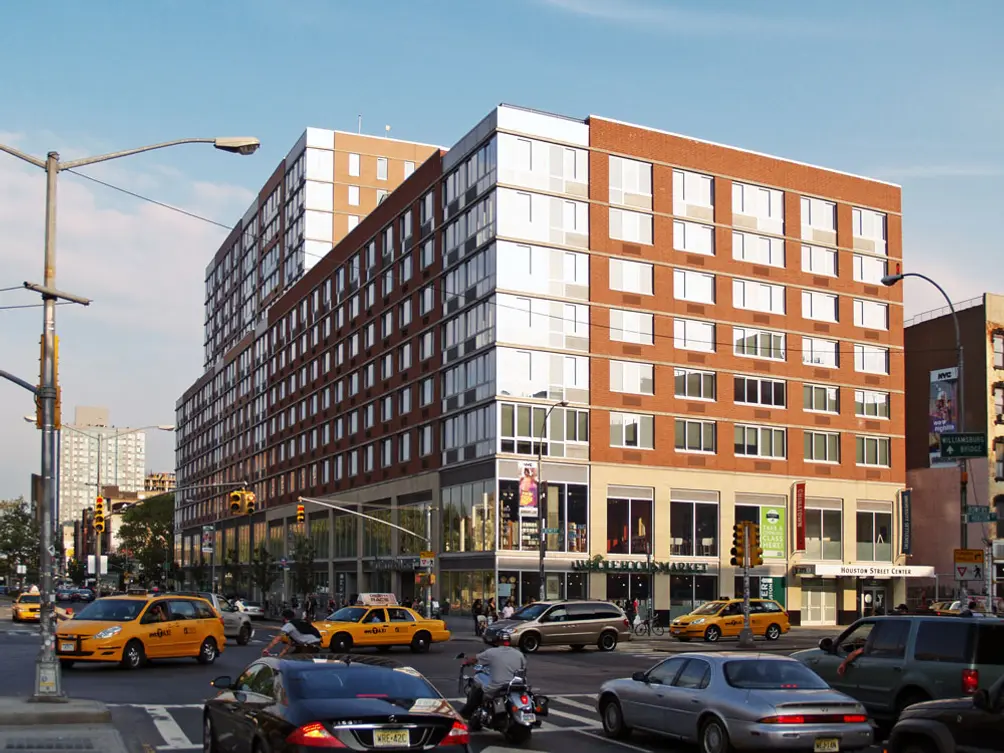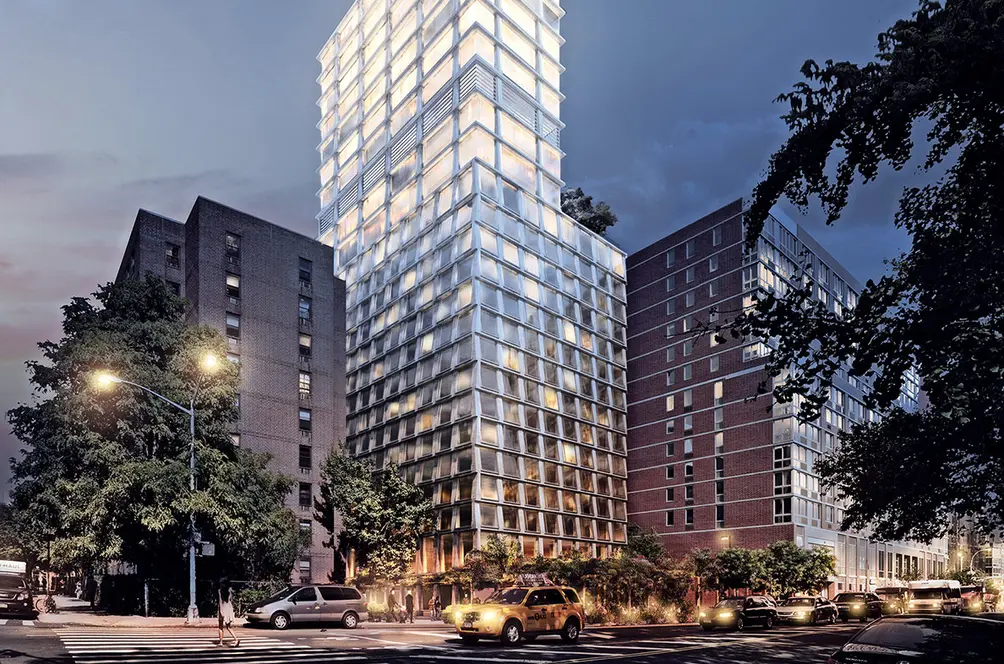 The intersection of Chrystie and Grand
The intersection of Chrystie and Grand
With a Whole Foods, vibrant nightlife and increasing cachet as a downtown destination, Chrystie Street is transforming from a sleepy byway to a revitalized thoroughfare dotted with million dollar apartments.
Chrystie Street traverses Chinatown and the Lower East Side until it stops at Houston Street and turns into Second Avenue, where the East Village begins. In fact, the street runs only seven blocks before reaching its terminus. The area’s population is varied, consisting of a large number of Asians who reside in the Chinatown area and are spreading that neighborhood’s borders, Latinos, professionals and seniors, blended in with hipsters, and middle-class folks residing in rent-stabilized apartments.
Chrystie Street traverses Chinatown and the Lower East Side until it stops at Houston Street and turns into Second Avenue, where the East Village begins. In fact, the street runs only seven blocks before reaching its terminus. The area’s population is varied, consisting of a large number of Asians who reside in the Chinatown area and are spreading that neighborhood’s borders, Latinos, professionals and seniors, blended in with hipsters, and middle-class folks residing in rent-stabilized apartments.
 The Lower East Side in the 1990s.
The Lower East Side in the 1990s.
In this article:
Twenty years ago, before the Lower East Side became attractive to developers and scene-seeking gourmands, Chrystie Street might have been described as hardscrabble, ramshackle and downtrodden.
Much of the street’s short run, is bordered by Sara Delano Roosevelt Park, which years ago was a scruffy neighborhood park. But in the mid-90s the park underwent a $2.7 million renovation and today consists of basketball courts, soccer fields and swings where nannies can be seen playing with their charges. On the Chinatown end, there’s a court where bicycle polo is played, one of the few places in the city where the activity thrives.
At the turn of the 20th century immigrants who arrived in the U.S. at Ellis Island began to settle on Chrystie Street. Most of the housing stock consisted of five- and six-story walk-up tenements with fire escapes. Now a number of these tenements are disappearing, replaced by pricey new residential developments.
Much of the street’s short run, is bordered by Sara Delano Roosevelt Park, which years ago was a scruffy neighborhood park. But in the mid-90s the park underwent a $2.7 million renovation and today consists of basketball courts, soccer fields and swings where nannies can be seen playing with their charges. On the Chinatown end, there’s a court where bicycle polo is played, one of the few places in the city where the activity thrives.
At the turn of the 20th century immigrants who arrived in the U.S. at Ellis Island began to settle on Chrystie Street. Most of the housing stock consisted of five- and six-story walk-up tenements with fire escapes. Now a number of these tenements are disappearing, replaced by pricey new residential developments.
 Opened in 2007, the Whole Foods located at the intersection of Chrystie and Houston
Opened in 2007, the Whole Foods located at the intersection of Chrystie and Houston
Indicative of the changes brewing on Chrystie Street is an 80,000-square-foot Whole Foods supermarket, which opened in 2007 and has become a mecca for shoppers.
Sitting above the Whole Foods store is The Chrystie at 229 Chrystie Street, a Rose Associates-developed rental building that debuted in 2006. The 14-story building consists of 361 units, including studio apartments, one- and two-bedrooms. The building has a swimming pool, rooftop deck, fitness center and resident’s lounge. The rents in the building range from $3,500 for a studio to $7,445 a month for the two-bedrooms. A Rose Associates spokesperson said the rental building “set the tone for the area, which was then a pioneering neighborhood.” He described the tenants as mostly “30-something professionals along with some students and retirees.”
A stone’s throw from The Chrystie, hotelier Ian Schrager is developing a combination 370-room hotel and 11-unit condo unit at 215 Chrystie Street. When completed, it will be 28 stories high, and include 11condo units designed by the Pritzker Prize-winning firm of Herzog & de Meuron. Condo owners will have access to the hotels’ amenities. Costs for the condo are $4,000 per square foot and include a penthouse going for $18.5 million. Schrager’s website says it has already completed seven sales, including four more that are in contract. Aside from the Whole Foods, a number of other shops have opened in recent years that appeal to affluent residents and visitors, such as multiple art galleries, a Pilates studio and a casting agency. One remnant of the old days near Houston Street is Micro Building Materials, a lumber store that appeals to contractors.
Sitting above the Whole Foods store is The Chrystie at 229 Chrystie Street, a Rose Associates-developed rental building that debuted in 2006. The 14-story building consists of 361 units, including studio apartments, one- and two-bedrooms. The building has a swimming pool, rooftop deck, fitness center and resident’s lounge. The rents in the building range from $3,500 for a studio to $7,445 a month for the two-bedrooms. A Rose Associates spokesperson said the rental building “set the tone for the area, which was then a pioneering neighborhood.” He described the tenants as mostly “30-something professionals along with some students and retirees.”
A stone’s throw from The Chrystie, hotelier Ian Schrager is developing a combination 370-room hotel and 11-unit condo unit at 215 Chrystie Street. When completed, it will be 28 stories high, and include 11condo units designed by the Pritzker Prize-winning firm of Herzog & de Meuron. Condo owners will have access to the hotels’ amenities. Costs for the condo are $4,000 per square foot and include a penthouse going for $18.5 million. Schrager’s website says it has already completed seven sales, including four more that are in contract. Aside from the Whole Foods, a number of other shops have opened in recent years that appeal to affluent residents and visitors, such as multiple art galleries, a Pilates studio and a casting agency. One remnant of the old days near Houston Street is Micro Building Materials, a lumber store that appeals to contractors.

Chrystie Street also has its share of memorable nightlife and eateries, such as Sammy’s Roumanian Steakhouse. A destination restaurant, it harkens back to the immigrant days when no one paid attention to cholesterol and high blood pressure. Indeed, chicken fat is placed on each table, like ketchup. Sammy’s still draws a throng to Chrystie Street most nights.
The performing arts are also represented in venues such as Dixon Place, which debuted on Chrystie Street in the late 1990s and hosts varied acts, including comedy troupes, burlesque, vaudeville and puppetry. A more risqué option is the nightclub the Box, which first launched in London before jumping to this side of the pond. Once hosting a sign factory, it was turned into the Box in the late ‘80s. The venue, which opens at 11 p.m. and does not start shows before midnight, includes shows by erotic performers, Chinese aerialists, and circus stars.
The performing arts are also represented in venues such as Dixon Place, which debuted on Chrystie Street in the late 1990s and hosts varied acts, including comedy troupes, burlesque, vaudeville and puppetry. A more risqué option is the nightclub the Box, which first launched in London before jumping to this side of the pond. Once hosting a sign factory, it was turned into the Box in the late ‘80s. The venue, which opens at 11 p.m. and does not start shows before midnight, includes shows by erotic performers, Chinese aerialists, and circus stars.
Take a Google Street View tour of the area:
Map view
StreetView
{
"key" : "",
"lat": 40.7162196,
"lng": -73.9947772,
"marker": {
"icon": ""
},
"pov": {
"heading": 0,
"pitch": 0,
"zoom": 1 }
}
Would you like to tour any of these properties?

Contributing Writer
Gary M. Stern
Gary M. Stern is a New York-based freelance business writer. He's written for Fortune.com, CNN/Money, Reuters, the New York Observer and the Wall Street Journal. He collaborated on "Minority Rules: Turn Your Ethnicity into a Competitive Edge" (Harper Collins) and "The Trouble with HR" (Amacom Press).


 6sqft delivers the latest on real estate, architecture, and design, straight from New York City.
6sqft delivers the latest on real estate, architecture, and design, straight from New York City.
